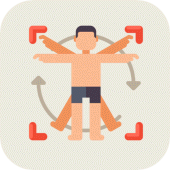
Learn Physiology 1.0.5 APKs
- Version: 1.0.5
- File size: 19.70MB
- Requires: Android 4.0+
- Package Name: hsdeveloper.generalphsiology
- Developer: HS Developers
- Updated Aug 21, 2024
- Price: Free
- Rate 3.90 stars – based on 10 reviews
What's New?
We
*Removed crashes and bugs
*Re designed the UI and UX
*Increased SDK version
*This is 1.0.5 version
Learn Physiology App
Introduction, structure of the cell, cell membrane, cytoplasm, organelles in cytoplasm, organelles with limiting membrane, organelles without limiting membrane, nucleus, deoxyribonucleic acid, gene, ribonucleic acid, gene expression, cell death, cell adaptation, cell degeneration, cell aging, stem cells.
Definition and classification, occluding junctions, communicating junctions, anchoring junctions, cell adhesion molecules.
Introduction, basic mechanism of transport, passive transport, special types of passive transport, active transport, special types of active transport, molecular motors, applied physiology.
Introduction, role of various systems of the body in homeostasis , components of homeostatic system, mechanism of action of homeostatic system.
introduction, hydrogen ion and pH, determination of acid-base status, regulation of acid-base balance, disturbances of acid-base status, clinical evaluation – anion gap. Show More
Physiology Notes app contains following chapters with topics list as below
Cell
Introduction, structure of the cell, cell membrane, cytoplasm, organelles in cytoplasm, organelles with limiting membrane, organelles without limiting membrane, nucleus, deoxyribonucleic acid, gene, ribonucleic acid, gene expression, cell death, cell adaptation, cell degeneration, cell aging, stem cells.
Cell Junctions
Definition and classification, occluding junctions, communicating junctions, anchoring junctions, cell adhesion molecules.
Transport through Cell Membrane
Introduction, basic mechanism of transport, passive transport, special types of passive transport, active transport, special types of active transport, molecular motors, applied physiology.
Homeostasis
Introduction, role of various systems of the body in homeostasis , components of homeostatic system, mechanism of action of homeostatic system.
Acid-base Balance
introduction, hydrogen ion and pH, determination of acid-base status, regulation of acid-base balance, disturbances of acid-base status, clinical evaluation – anion gap.
Popular
Top Education Apps
